‘Blue Arrow Juniper’ trees make an ideal outdoor Christmas tree look. Which have dense, shiny, blue-green leaves. Whereas it has a narrow, straight, and pyramidal shape. The tree bears somewhat insignificant flowers. Additionally, bluish-silver berries appear in late spring and persist through the winter.
This can be an excellent choice for gardeners who have a formal or Mediterranean-style garden. At the same time, Blue Arrow can be grown even in such cold places where other trees cannot survive.
So let us know what aspects to keep in mind to grow and care for this wonderful plant (or tree) in your landscape…
Why choose Blue Arrow Juniper
For those looking for a beautiful, yet easy to grow, tree or plant that requires very little maintenance, the Blue Arrow Juniper is a great choice.
It is a surprisingly very low-maintenance plant. They are very courageous, tough, and resilient. Able to tolerate a wide range of soil, temperature water supply, etc. Besides, it can adapt itself to different types of situations. Whereas all it needs is full sun and well-drained soil and it continues to grow happily.
With proper care, this tree grows at a moderate rate of 18 inches per year and lives for about 70 years. In this way, it keeps increasing the attractiveness of the area where it is planted. ‘Blue Arrow Juniper’ is very popular because of its many qualities.
Planting Tips
When to Plant
Blue Arrow juniper plants can be planted at any time throughout the year as long as the soil is workable. But spring is the best time for planting new plants.
 Where to Plant
Where to Plant
You may want to consider planting Blue Arrow juniper for different purposes and in different locations in your landscape or garden. Whatever may be the place of planting, some elements need to be kept in mind.
Blue Arrow is capable of handling a variety of situations. But does not compromise on some basic needs. It needs full sun. The second main requirement is well-drained soil. If these two demands are fulfilled then there will be no hue and cry for the others. Image Source: Plantingtree.com
How to Plant
Dig a hole in the chosen location that is as deep as the root ball and about twice as wide. Take the plant out of its current pot, and loosen its roots a little. You can use your fingers or any tool to loosen the roots. But keep in mind that there is no damage to the roots.
Place the tree upright in the hole. Fill the remaining space of the hole with rich soil. Then add water thoroughly. Make sure that the point on the plant where the root ball and stem meet is approximately at or a few inches below ground level, neither lower nor higher than that.
Care Tips for Blue Arrow Juniper Tree
Soil
Blue Arrow juniper is not demanding on specific soils and can tolerate most soil types and a wide range of pH levels. This is one of the many reasons that make Blue Arrow juniper a favorite choice for the landscape.
Still, if you want to give it an ideal soil to give it a great life, try to give it a slightly acidic soil. At the same time, alkaline soil along with clay soil and dense soil is also suitable for this. On the other hand, the soil needs to have good drainage. Because the roots will not tolerate water logging. Ideal soil helps Blue Arrow adapt to the environment and grow strongly.
Light
It demands full sun. It grows well if it gets adequate sunlight for at least 6 hours every day. On the other hand, if we get a few hours of morning sunlight then it is very beneficial. Whereas during the day, when the sun is at its hottest, they can be protected from damage to the leaves by providing them with partial shade.
However, the nature of the tree is very flexible and hence, it can be planted in different conditions. Even if partial shade is not possible, there is no need to worry. But do provide full sun.
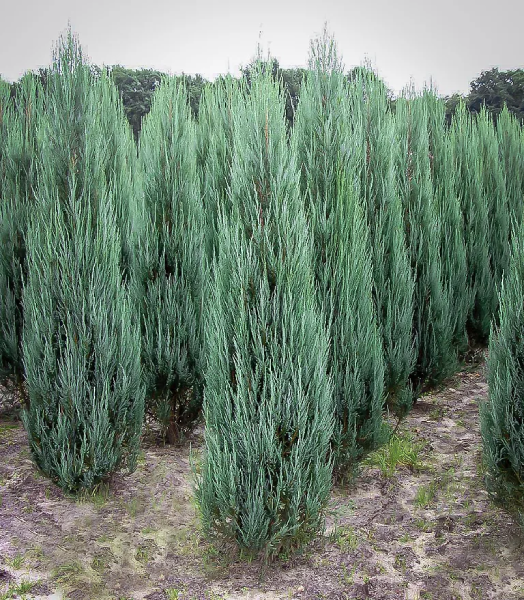
Temperature
These plants are suitable for zones 4 to 9 and perform best in these. Whereas with proper care it can be grown in any area.
Their tolerance to wide ranges of temperatures increases once they become established. Blue Arrow Juniper is also extremely versatile. It is capable of withstanding hot dry conditions as well as cold winters.
Interestingly, Blue Arrow juniper is grown in colder regions where other native trees cannot survive (for example, Italian cypress). It can withstand harsh cold and is more tolerant than other trees and plants. Source: Plantingtree.com
Water
Blue Arrow Juniper is not very hungry in terms of water needs. It can withstand drought. But this does not mean that you should ignore its basic needs. It needs a little care in its first year. Later it becomes tolerant but will be happy when you water it.
When Blue Arrow Juniper is first planted, it takes about 6 weeks to become established in the soil. In these first 6 weeks, watering should be done every 2-4 days. Once established, Blue Arrow plants become somewhat robust. Later they should be watered once a week until it starts raining. Once established, in subsequent years, watering is provided only during extended periods of drought.
The easiest way to know whether plants need water or not is to touch the soil near the roots with your fingers. If you do not feel moisture up to 2 to 3 inches deep in the soil, it needs water. Water its roots deeply; sprinkling water on leaves or other parts will not be of much use.
Fertilizer
Blue Arrow Juniper is a low-maintenance plant. For this reason, it does not demand excessive fertilizer. But when nutrients are supplied, it becomes beautiful as well as grows strongly.
If there is a lack of nutrients in the soil then it is necessary to amend it, because this can stunt the growth of the plant. It is better to use slow-releasing organic fertilizers. Whereas all-purpose fertilizer can also be used as an alternative. If you are looking for other fertilizer options, you can use organic manure or bone meal.
However, they can be fertilized any time of the year, whenever the soil is workable. The best time to apply fertilizer is early spring and summer. Whereas giving twice a year is enough. On the other hand, apply fertilizer at a short distance from the stems, as this will affect the stems and there is a risk of burning the roots. Don’t forget to water thoroughly immediately after applying fertilizer.
Pruning Tips for Blue Arrow Juniper
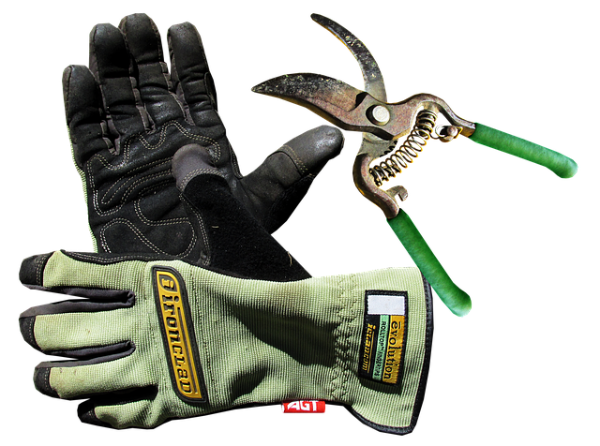 Blue Arrow Juniper is naturally tall, narrow, and conical. Thanks to this natural structure it requires little or no pruning. Its sorting is done for some specific purposes. Let’s see how this should be done.
Blue Arrow Juniper is naturally tall, narrow, and conical. Thanks to this natural structure it requires little or no pruning. Its sorting is done for some specific purposes. Let’s see how this should be done.
As a best practice, the plant should be pruned lightly and allowed to grow into the shape you desire. You can make it thin and narrow by trimming it all around. On the other hand, cutting the tops of the branches can make it a denser and wider tree.
If any part of the plant is suffering from any disease and is not getting cured by treatment, then it can be cured by pruning. Prune out unhealthy areas and prevent the disease from spreading to other areas. Some pests and diseases can also cause airflow to be blocked, making pruning necessary.
Complementary Plants for Blue Arrow Juniper
When selecting complementary plants for Blue Arrow Juniper, consider those that enhance its features, provide contrast, and thrive in similar growing conditions. Here are some suggestions:
1. Dwarf Evergreen Shrubs:
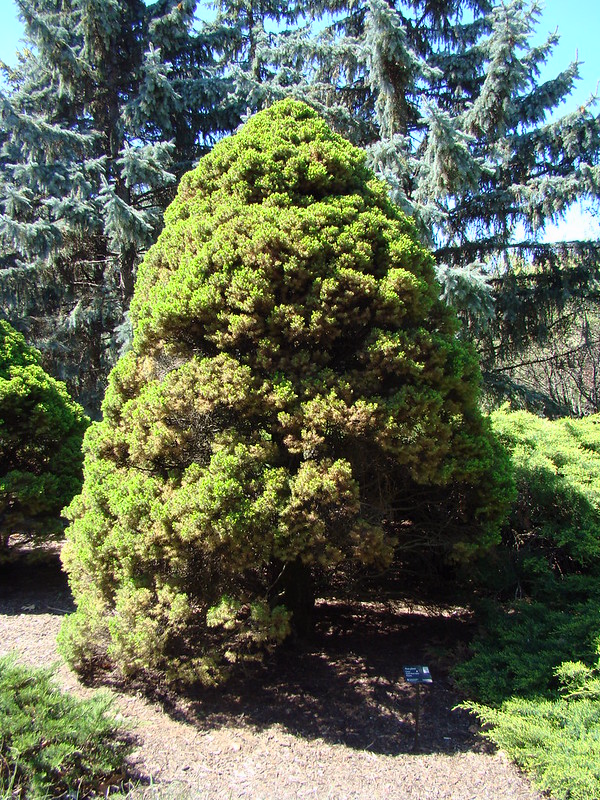 Examples:
Examples:
- Dwarf Alberta Spruce (Picea glauca ‘Conica’),
- Globe Blue Spruce (Picea pungens ‘Glauca Globosa’),
- Dwarf Japanese Garden Juniper (Juniperus procumbens ‘Nana’).
These smaller evergreen shrubs can be planted around the base of Blue Arrow Juniper to create a layered effect and add interest.
2. Ornamental Grasses:
Examples:
- Karl Foerster Feather Reed Grass (Calamagrostis acutiflora ‘Karl Foerster’),
- Blue Fescue (Festuca glauca),
- Maiden Grass (Miscanthus sinensis).
Ornamental grasses provide contrasting textures and a dynamic, graceful movement that complements the vertical structure of Blue Arrow Juniper.
3. Perennials with Contrasting Foliage:
Examples:
- Purple Coral Bells (Heuchera spp.),
- Black-Eyed Susan (Rudbeckia hirta),
- Autumn Joy Sedum (Hylotelephium ‘Herbstfreude’).
Perennials with colorful foliage or flowers can add pops of color and variety, creating a visually appealing contrast against the juniper’s blue-green needles.
4. Low-Growing Groundcovers:
Examples:
- Creeping Jenny (Lysimachia nummularia),
- Blue Star Creeper (Isotoma fluviatilis),
- Ajuga (Ajuga reptans).
Groundcovers help to fill in spaces around the base of Blue Arrow Juniper, suppressing weeds and providing a lush, carpet-like effect.
5. Rock Garden Plants:
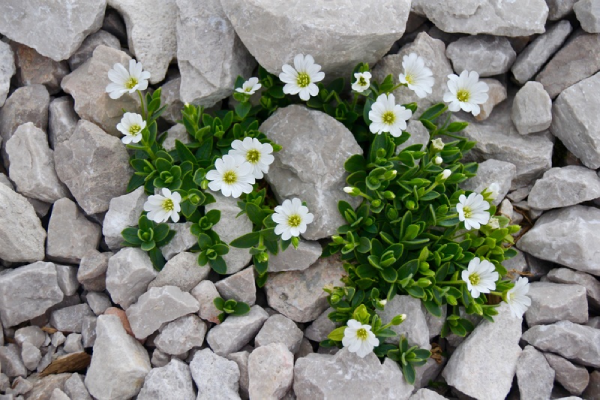 Examples:
Examples:
- Hens and Chicks (Sempervivum spp.),
- Ice Plant (Delosperma spp.),
- Alpine Speedwell (Veronica bombycina).
If you’re creating a rock garden, these low-growing and drought-tolerant plants can complement the rugged appearance of Blue Arrow Juniper.
6. Flowering Shrubs:
Examples:
- Potentilla (Potentilla fruticosa),
- Dwarf Korean Lilac (Syringa meyeri),
- Spirea (Spiraea spp.).
Flowering shrubs can provide bursts of color during the growing season, adding seasonal interest to the landscape.
7. Drought-Tolerant Perennials:
Examples:
- Lavender (Lavandula spp.),
- Russian Sage (Perovskia atriplicifolia), and
- Yarrow (Achillea millefolium).
Blue Arrow Juniper is drought-tolerant, so selecting companion plants with similar water requirements can result in a cohesive and water-efficient garden.
Remember to consider the specific growing conditions of your garden, including sunlight exposure, soil type, and water availability, when choosing companion plants for Blue Arrow Juniper. This will help ensure a harmonious and thriving landscape.
Landscaping Design Ideas for Blue Arrow Juniper
Blue Arrow juniper is a narrow, columnar evergreen shrub that is often used in landscaping for its unique shape and attractive blue-green foliage. Here are some landscape design ideas for incorporating Blue Arrow juniper into your outdoor space:
1. Vertical Pronation:
– Use Blue Arrow juniper as a vertical accent in your garden or landscape design. Its straight, columnar shape makes it an excellent choice for creating a focal point or drawing attention to specific areas.
2. Privacy Screen:
– Plant Blue Arrow Juniper in a row to create a dense and narrow privacy screen. This is especially effective in smaller yards where space is limited, and you want to prevent an unsightly view or create a more intimate outdoor space.
3. Container Planting:
– Consider planting Blue Arrow juniper in containers to add evergreen interest to a patio, deck, or entryway. This narrow form works well in tall, thin pots, adding a vertical element to your container garden.
4. Companion Plants:
-Combine Blue Arrow juniper with other plants that complement its color and texture. Plants with contrasting foliage, such as ornamental grasses or flowering perennials, can enhance the overall beauty of the landscape.
5. Rock Garden:
-Incorporate Blue Arrow juniper into the rock garden to provide vertical interest. The narrow form of the plant blends well with the natural texture of the rocks and stones, creating a visually appealing composition.
6. Driveway or Walkway Borders:
– Plant Blue Arrow juniper along a driveway or walkway to create a formal and structured border. The column shape adds a sense of order and defines the edges of the hardscape.
7. Drought-tolerant landscape:
– Blue Arrow Juniper is known for its drought tolerance once established. Incorporate it into xeriscapes or drought-tolerant landscapes, where low-water-use plants are used to create eco-friendly and sustainable gardens.
Remember to consider your local climate and soil conditions when incorporating Blue Arrow juniper into your landscape. With its unique form and color, this plant can contribute to a visually appealing and low-maintenance outdoor space.
Pests and Diseases of Blue Arrow Juniper
Despite having many characteristics, Blue Arrow Juniper is sensitive to some problems. Some pests and diseases can trouble them, which need attention.
Pests
 Spruce Spider Mite
Spruce Spider Mite
A tiny insect called the spruce spider mite causes problems for Blue Arrow Juniper. These are quite small and not easily visible. These spider mites suck the sap of the tree and gradually cause serious damage to the plant.
However, you can see its symptoms more easily than other mites. These often appear as small yellow spots and you may also see browning or falling needles on the plant. Even if traps are visible, it may be a sign. These first make the tree ugly and eventually destroy it.
Unlike common spider mites, spruce spider mites are active in winter rather than summer. The easiest way to control them is to shower with water. You may have to do this again and again. On the other hand, avoid using common pesticides. This is because it also harms some natural predators beneficial to the plants. You should use specific insecticides available for spruce spider mites and follow the directions on the label. Use repeatedly as needed.
Bagworm
Bagworms are another pest that is a problem for the Blue Arrow juniper tree. This can range from stunting the plant’s growth to ultimately destroying the tree, with the risk that it deserves your attention.
These moths are also very small in size. Their females are yellow and the males are black. They grow up to about 2 inches long and damage various parts of the plant. If timely measures are not taken, they can increase their numbers greatly.
Some natural predators try to control them when you are unaware of them. But often these do not end completely. Keep inspecting the plant from time to time. For remedy, use antibacterial insecticides and keep using them again and again until they are destroyed.
Juniper Scale
Juniper scale (Carulaspis juniperi) are pests with similar characteristics to spider mites. When infected, the tree’s needles will first turn brown and then yellow. These prove to be very fatal for Blue Arrow because after the attack the plants start looking ugly. Entire branches begin to die back, then die back within a few years. Therefore timely measures are necessary.
Juniper scales are very small and often look like small bumps. They usually occur on the underside of infected needles. If you see any signs of discoloration, inspect thoroughly. Treat with insecticide, then observe and reapply as needed.
Aphids
Most gardeners are familiar with the damage caused by aphids as they damage almost all types of plants in the garden. The way to prevent or as much as possible reduce the attack of aphids on the Blue Arrow juniper tree is to keep the plant healthy. By taking proper care of it, the parts of the plant do not weaken and remain safe from aphids.
Nevertheless, if there is any attack by aphids, some symptoms can be seen. For example, they leave a honey-like trail that often attracts ants. A strong stream of water or aphid-specific insecticide should be used.
Diseases for Blue Arrow Juniper
Blue Arrow Juniper can suffer from diseases like Kabatina and Phomopsis blight if overwatered. At the same time, waterlogging causes yellowing of leaves and rotting of roots.
On the other hand, this plant or tree may also be at risk from some diseases. Like, the scorching of a branch. In this the color of the tips of the branches becomes brown. Treatment requires pruning out all infected areas and destroying the removed parts. So that other parts of the plant remain safe. After this, fungicide should be applied to other parts of the plant, especially new growth.
FAQs
 Q1. What is the difference between Juniper Blue Arrow and Skyrocket?
Q1. What is the difference between Juniper Blue Arrow and Skyrocket?
The main difference between these two juniper trees is the color of the leaves and their width. The first difference is that the leaves of the Blue Arrow Juniper are blue. Skyrocket, on the other hand, has silvery green leaves.
As a second difference, Skyrocket takes the form of a broad-leaved tree and can grow up to about five feet thick. Whereas, Blue Arrow is a maximum of two feet wide. In terms of shape, the Skyrocket is like a pyramid and the Blue Arrow is like a pencil.
Q2. Are Blue Arrow junipers fast-growing?
Yes! Blue Arrow junipers are fast growers. They can grow about 1 foot per year. Although it is not very fast-growing, it is a medium to fast-growing tree.
Q3. How much distance should there be between ‘Blue Arrow Junipers’?
However, Blue Arrow Juniper is suitable for planting even in narrow places. But if you expect a good performance effect from them then plant them at an equal distance of 3 to 4 feet. These grow to about 2 feet wide when they grow, so this distance will be sufficient.
Q4. Why are my Blue Arrow junipers turning brown?
There can be many reasons for this. Diseases like twig blight and pests like spider mites or scale can cause this. On the other hand, lack of nutrients in the soil can also be the reason.
To remedy this, examine the plant closely. If someone is suffering from a disease or insect then use insecticide or fungicide. On the other hand, amend the soil and use a balanced fertilizer.
Q5. Are Blue Arrow juniper resistant to deer and other wildlife?
Yes! Deer and most other grazing wildlife generally avoid eating Blue Arrow. In this way, these plants serve as good hedges and boundaries.
Q6. Does Blue Arrow attract birds to the garden?
Being an ornamental plant, Blue Arrow does not have much to attract birds. But the berries that grow from late spring to winter are especially attractive to birds. So, yes!
Q7. Where should I plant Blue Arrow juniper?
Choose a location in grow zones 4-9 with full sun and well-drained soil. This location would be suitable for planting Blue Arrow Juniper. Also, plant two plants at a distance of 3 to 4 feet for a good look and privacy screen.
Q8. How tall do these junipers get?
It is approximately 15 feet long and a maximum of 2 feet wide. Whereas a tree with a narrow pencil-like shape is formed.
You might also like these:
Spirea 101: Ultimate Guide to Planting, Growing, Pruning and More
Daylilies: Complete guide for Plant, Care, Grow and Gardening Tips


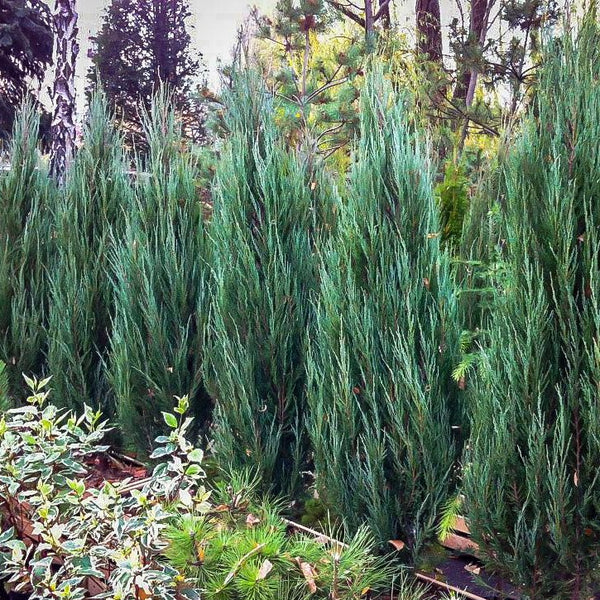 Where to Plant
Where to Plant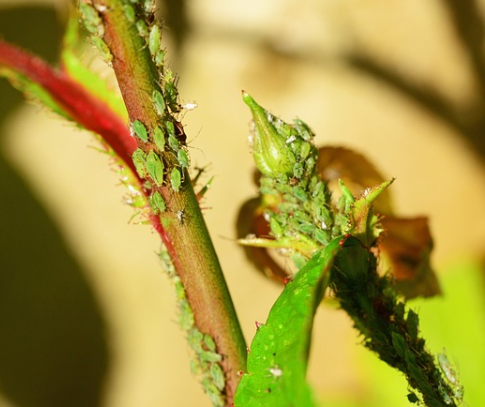 Spruce Spider Mite
Spruce Spider Mite Q1. What is the difference between Juniper Blue Arrow and Skyrocket?
Q1. What is the difference between Juniper Blue Arrow and Skyrocket?








